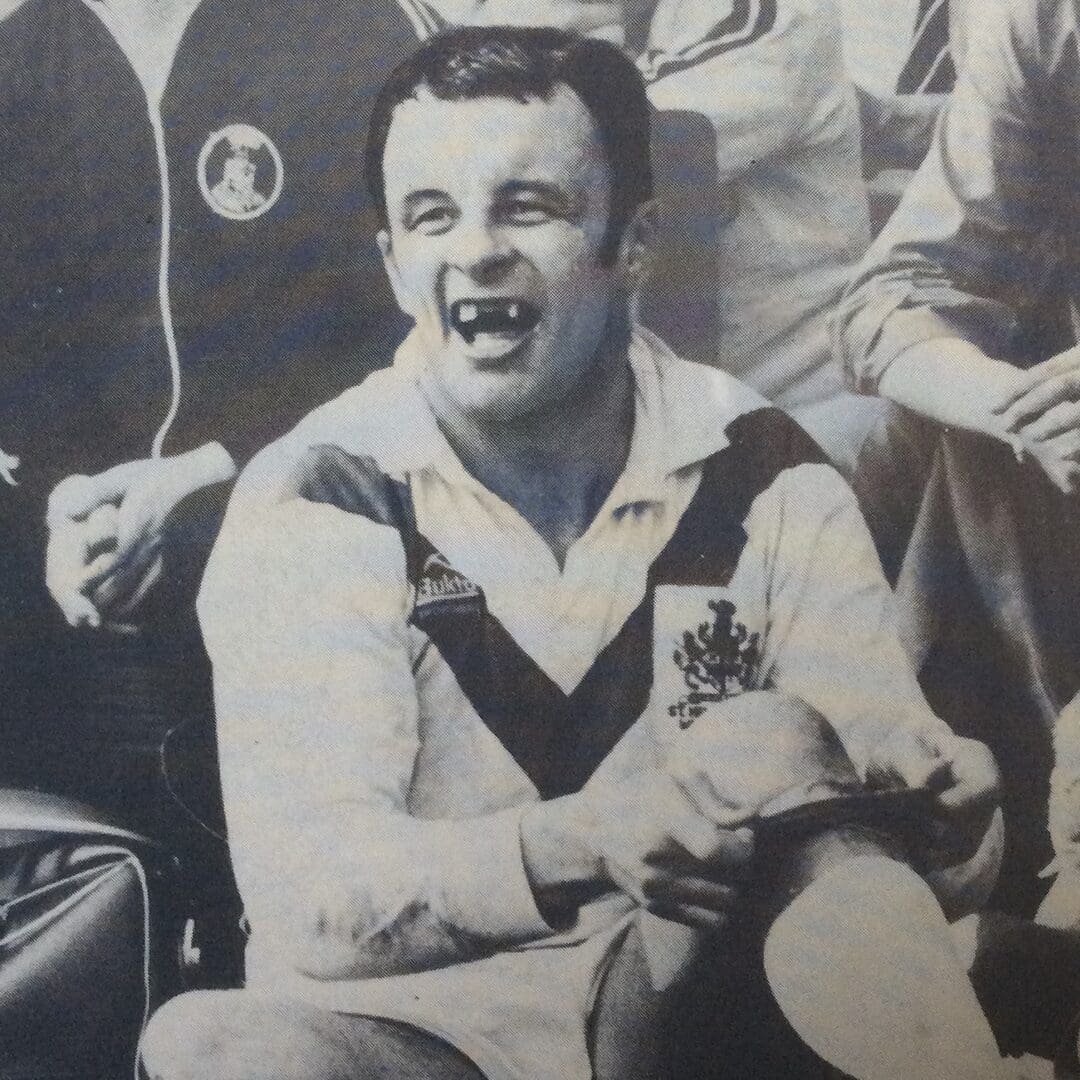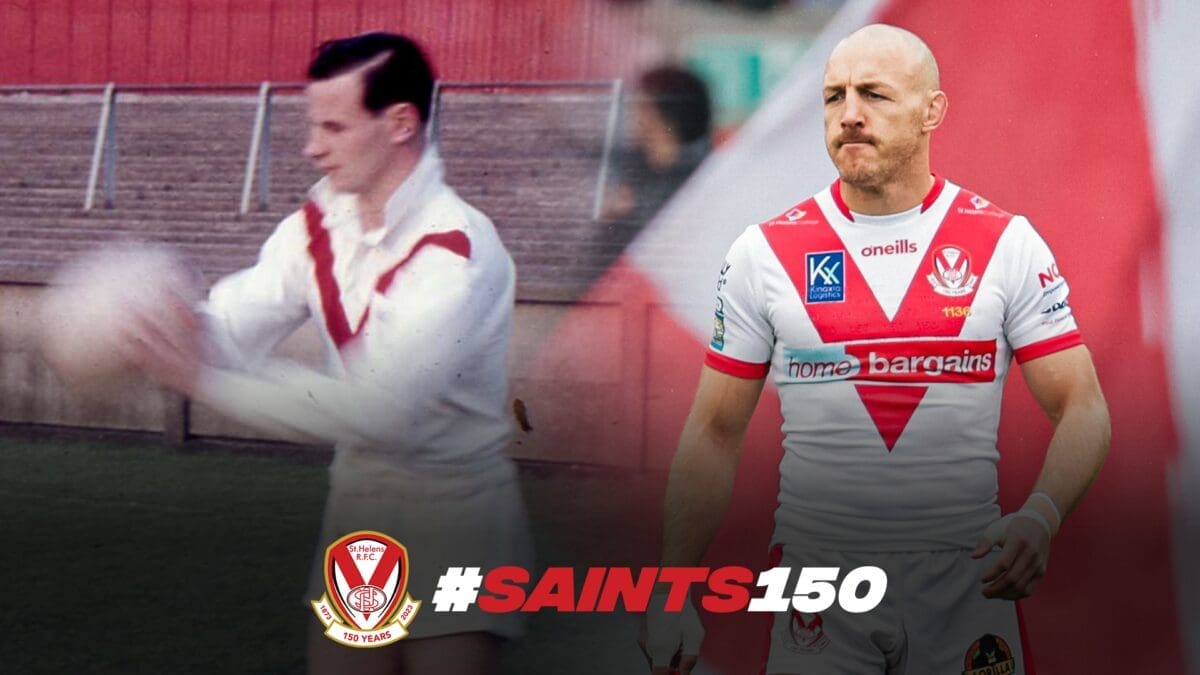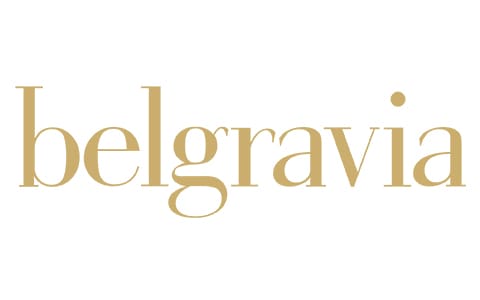The Club is celebrating our heritage over 15 days ahead of the anniversary date of St.Helens R.F.C.’s founding on the 19th of November 1873.
Today, we take a look at the symbol that has become synonymous with our Club the world over, the iconic Saints Red V…
On Saturday, 13th May 1961 the Challenge Cup Final was held at Wembley Stadium and it was set to be a classic as old rivals and nearby neighbours St.Helens faced Wigan for glory. On the team’s previous two visits to the national stadium in the 1950s the players wore white jerseys with red on the chest and red bands on the arms.
Entering a new decade, the Club sought a more modern look, and the club’s kit supplier at the time gave two options; an all-white design with the town’s crest, or a similar version but supporting a thin red v shape. The decision was made to go with the shape of colour and so began our association with the Red V and a huge part of our identity going forward.

It could not have got off to a better start either in that Final in 61’ under the famous old Twin Towers at Wembley, with our Saints getting the win thanks to Ken Large and Tom van Vollenhoven combining to score one of the great Challenge Cup tries. The scenes following the victory saw the team photographed together wearing the Red V in what have become legendary images, and captain Vince Karalius holding the trophy high. A sign of things to come.
Five years on in 1966, the Red V returned to Wembley once more, this time with the town’s crest on the chest emblazoned on a black patch to create one of the most famous early shirts that featured the Red V. Skippered by Alex Murphy, that team in 66′ won a four-cup haul that year had stars in it such as Billy Benyon, Ray French and Kel Coslett to name just a few.

The 1976 shirt a white background patch for the town crest returned to the Saints’ strip and kit manufacturers Butka had visible branding also on the chest.

Into the 1980s with a shift to three-quarter sleeves alongside a variety of changes with different versions of the V shape, red sleeves, and the beloved Stickman was used for the first time too. By 1994 the Saints’ kit was made by Stag and the shirt that year had black trims with McEwan’s Lager featuring prominently in blue and the town crest returning once more.

A new chapter began in 1996 with the dawn of the Super League and the summer era of British rugby league started. The first year of the new competition saw St.Helens become champions and do it wearing one of the most popular and fondly remembered strips by supporters.

Into the new millennium, many famous Saints strips were attached to success too. The 2001 shirt featured two club logos embedded into the Red V and was worn in our first World Club Challenge victory. A kit designed by Puma in 2004 had an unusual spread style V over the chest and was worn in the Challenge Cup Final victory over Wigan in Cardiff.
2006 will be a season that will never be forgotten with the Club winning a historic treble of trophies with an iconic look of a thick Red V, a button style collar, combined with red socks too.

Ahead of the new stadium move to come, 2011 saw the initial re-branding of the Club from the older S&H oval crest to the crest as we know it today with the Red V as a prominent feature, and the kit that year incorporated a chevron-style V for the new era. In 2014 the Saints secured a sixth Super League title with a triple version of the chevron-style, red sleeves, and full red side panels too.
Partnering with British brand O’Neills Sportswear from the 2015 season, their first designed strip displayed a deep V with silver and mesh-style side paneling.

The start of a special period of four straight Super League titles, the 2019 jersey was a minimalist design with a triple Red V. To celebrate 60 years of the Red V, the Saints wore a ‘dipping’ V design with a red gradient on the edges.
In the Club’s 150th anniversary year for 2023 St.Helens wore a white shirt with a classic Red V in a clean and traditional look, with red flashes on the collar and sleeves.

The Saints wore the 2023 Home Kit with some slight modifications to include images of the two previous World Club Challenge victories in 2001 and 2007, plus two gold stars above the crest for the 2023 World Club Challenge which St.Helens won against Penrith Panthers.

Saints 24 Kits are now available online at saintssuperstore.com




















































